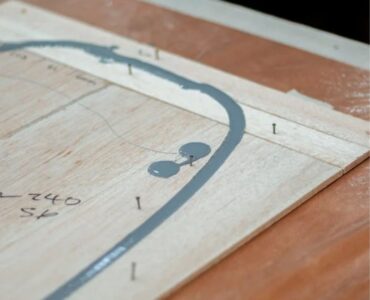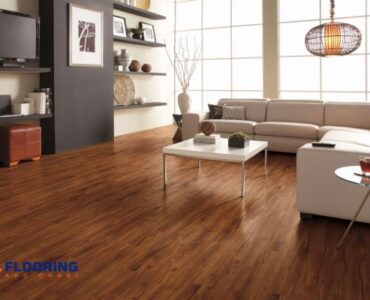Plywood has been a staple in the construction and woodworking industries for decades, and for good reason. This versatile engineered wood product offers numerous benefits that make it an excellent choice for a wide range of applications. In this comprehensive guide, we’ll explore the top 10 advantages of plywood and why it continues to be a popular material for both professionals and DIY enthusiasts alike.
What is Plywood?
Before diving into the advantages of plywood, let’s briefly discuss what it is. Plywood is an engineered wood product made by gluing together thin layers of wood veneers, called plies. These layers are typically arranged with their wood grain running perpendicular to each other, creating a strong and stable panel.
Now, let’s explore the many benefits that make plywood such a valuable material.
1. Exceptional Strength and Durability
One of the most significant advantages of plywood is its impressive strength-to-weight ratio. The cross-layered construction of plywood distributes stress evenly across the panel, making it much stronger than solid wood of similar thickness.
Key points:
- Resists warping and twisting
- Holds fasteners well
- Can support heavy loads
- Less prone to splitting than solid wood
This strength and durability make plywood an excellent choice for structural applications, flooring, and furniture construction.
2. Versatility in Applications
Plywood’s versatility is another major advantage that sets it apart from other materials. It can be used in a wide range of projects, both indoors and outdoors.
Common applications include:
- Wall sheathing
- Roof decking
- Subflooring
- Furniture making
- Cabinetry
- Concrete formwork
- Packaging and crates
- Boat building
This versatility makes plywood a go-to material for contractors, woodworkers, and DIY enthusiasts alike.
3. Cost-Effectiveness
When considering the advantages of plywood, its cost-effectiveness is a crucial factor. Plywood offers an excellent balance between performance and price, making it an economical choice for many projects.
Cost benefits:
- Lower cost per square foot compared to many solid wood options
- Reduced labor costs due to ease of installation
- Longer lifespan, reducing replacement frequency
- Less waste during cutting and shaping
By choosing plywood, you can often achieve professional results without breaking the bank.
4. Dimensional Stability
One of the most significant advantages of plywood is its exceptional dimensional stability. Unlike solid wood, which can expand, contract, or warp with changes in humidity and temperature, plywood remains relatively stable.
Benefits of dimensional stability:
- Maintains shape in varying environmental conditions
- Reduces the risk of gaps, cracks, or warping in finished projects
- Ideal for use in areas with fluctuating humidity levels
- Ensures consistent performance over time
This stability makes plywood an excellent choice for applications where precision and long-term reliability are crucial.
5. Easy to Work With
Plywood’s workability is another advantage that makes it popular among both professionals and DIY enthusiasts. Its uniform composition and lack of knots or irregular grain patterns make it easy to cut, shape, and finish.
Workability features:
- Can be cut with standard woodworking tools
- Accepts screws and nails without splitting
- Easy to sand and finish
- Can be painted, stained, or veneered
This ease of use makes plywood an excellent material for beginners and experienced woodworkers alike.
6. Available in Various Grades and Types
The advantages of plywood extend to its wide variety of grades and types, allowing you to choose the perfect option for your specific project needs.
Common plywood types:
7. Environmentally Friendly Option
In today’s eco-conscious world, the environmental advantages of plywood are worth noting. When sourced responsibly, plywood can be a sustainable choice for your construction and woodworking needs.
Environmental benefits:
- Efficient use of wood resources (uses thin veneers instead of thick planks)
- Can be made from fast-growing, renewable tree species
- Many manufacturers offer FSC-certified plywood options
- Recyclable and biodegradable at the end of its life cycle
By choosing sustainably sourced plywood, you can reduce your environmental impact without compromising on quality or performance.
8. Excellent Insulation Properties
Another advantage of plywood that’s often overlooked is its insulation capabilities. Plywood has natural insulating properties that can help improve energy efficiency in buildings.
Insulation benefits:
- Helps regulate indoor temperatures
- Can reduce heating and cooling costs
- Acts as a sound barrier, reducing noise transmission
- Can be combined with other insulating materials for enhanced performance
These insulation properties make plywood an excellent choice for both residential and commercial construction projects.
9. Resistance to Splitting and Cracking
Unlike solid wood, which can split or crack along the grain, plywood’s cross-layered construction provides excellent resistance to these issues. This is one of the key advantages of plywood that makes it ideal for many applications.
Benefits of split and crack resistance:
- Improved longevity of finished projects
- Reduced risk of structural failure
- Better performance when used with fasteners
- Ideal for applications involving repeated stress or impact
This resistance to splitting and cracking contributes to plywood’s overall durability and reliability.
10. Customizable Appearance
The final advantage of plywood we’ll discuss is its customizable appearance. Plywood can be finished in a variety of ways to achieve the desired look for your project.
Appearance options:
- Available with different face veneers (oak, maple, birch, etc.)
- Can be painted or stained to match any color scheme
- Accepts veneers for a high-end wood look
- Can be left unfinished for a natural, rustic appearance
This flexibility in appearance makes plywood suitable for a wide range of design styles, from modern to traditional.
Conclusion
In conclusion, the advantages of plywood make it an invaluable material in the world of construction and woodworking. Its combination of strength, versatility, cost-effectiveness, and ease of use has solidified its place as a go-to option for professionals and DIY enthusiasts alike. From its exceptional dimensional stability to its customizable appearance, plywood offers a unique set of benefits that are hard to match with other materials.
Whether you’re building a house, crafting furniture, or tackling a small home improvement project, consider the many advantages of plywood. Its widespread availability, variety of grades and types, and eco-friendly options make it a smart choice for countless applications. By understanding and leveraging these benefits, you can ensure the success and longevity of your next project.
Q: Is plywood stronger than solid wood?
A: In many cases, yes. Plywood’s cross-layered construction distributes stress more evenly, often making it stronger than solid wood of similar thickness.
Q: Can plywood be used outdoors?
A: Yes, certain types of plywood, such as marine-grade plywood, are specifically designed for outdoor use and can withstand exposure to moisture and weather.
Q: Is plywood environmentally friendly?
A: When sourced responsibly, plywood can be an environmentally friendly option. Look for FSC-certified plywood to ensure it comes from sustainably managed forests.
Q: How long does plywood last?
A: With proper care and depending on the application, plywood can last for decades. Its durability is one of the key advantages of plywood.
Q: Can plywood be painted or stained?
A: Yes, plywood readily accepts both paint and stain, allowing for a wide range of finish options.
Q: Is plywood good for furniture making?
A: Absolutely. Many of the advantages of plywood, such as its strength, stability, and workability, make it an excellent choice for furniture construction.
Q: How does plywood compare to MDF or particleboard?
A: Plywood is generally stronger and more moisture-resistant than MDF or particleboard, making it a better choice for structural applications and areas exposed to moisture.
Q: Can plywood be used for flooring?
A: Yes, plywood is commonly used for subflooring and can also be used as a finished floor surface when properly sealed.
By understanding these advantages of plywood and addressing common questions, you can make informed decisions about using this versatile material in your projects. Whether you’re a professional contractor or a weekend warrior, plywood’s unique combination of benefits makes it a smart choice for a wide range of applications.




